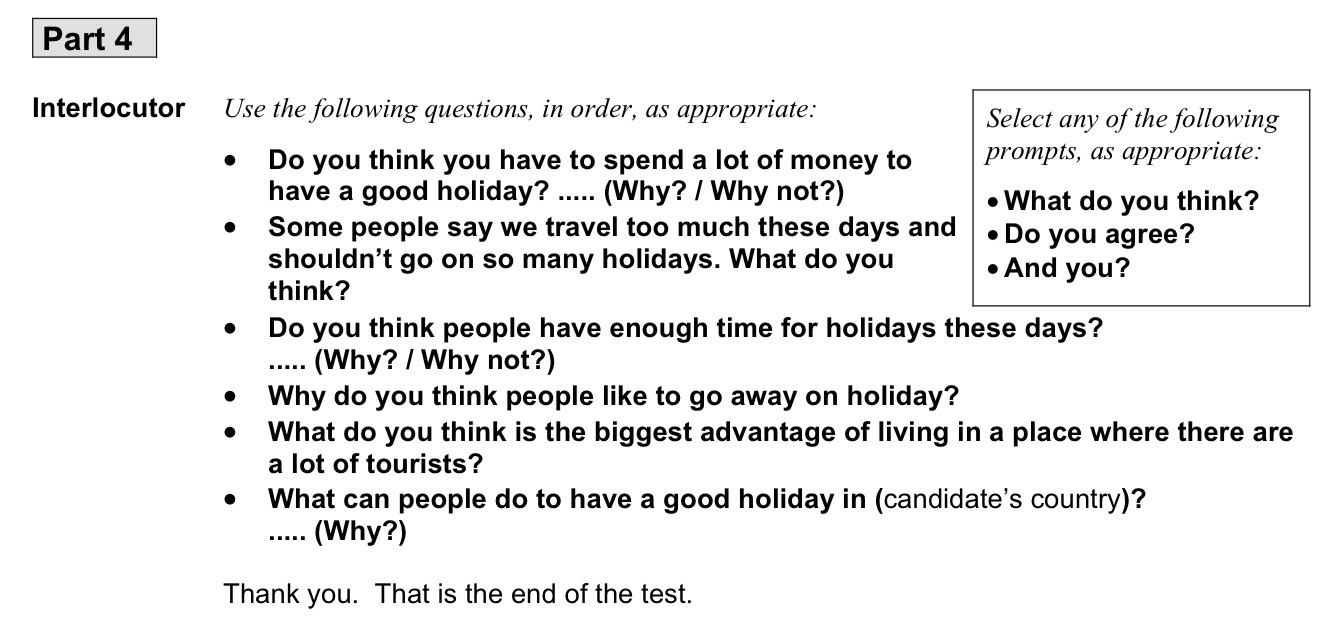
Speaking for First
¡
Speaking B2: Qué es el nivel B2
Cómo es el Speaking B2 First
- Tiene 4 partes.
- Se realiza en parejas.
- Es evaluado por dos examinadores orales.
- Durante el examen debes interactuar con tu pareja y con uno de los examinadores.
- El otro examinador no habla, simplemente evalúa.
Part 1
El examinador te hará una serie de preguntas personales (de dónde eres, por qué aprendes inglés, experiencias pasadas, trabajos, estudios, etc.).
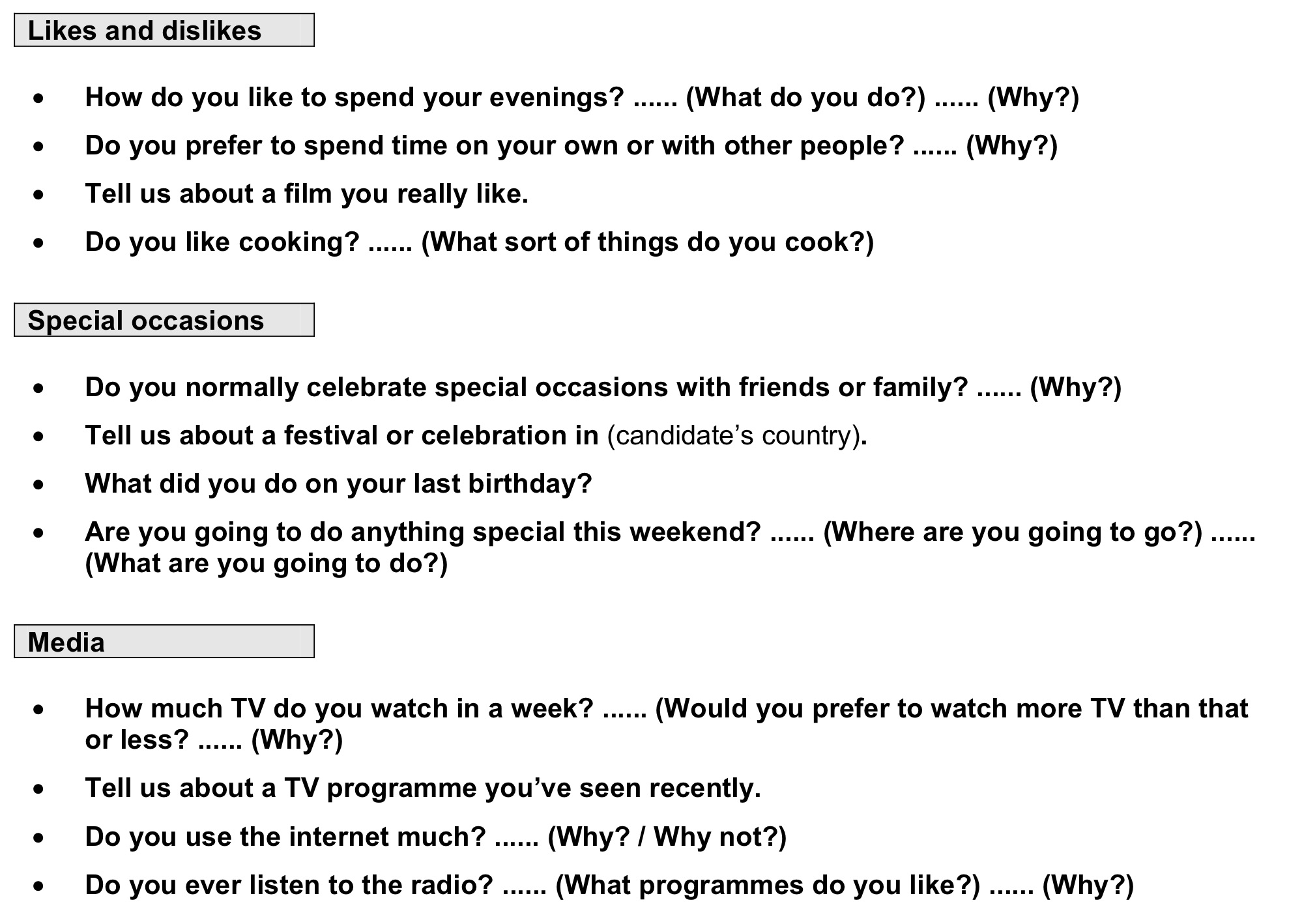
Part 2
Cada candidato tendrá que comparar dos imágenes respondiendo a una pregunta, todo ello en 1 minuto, Después, deberá responder una pregunta acerca de las imágenes de el compañero, en 20 o 30 segundos. Es decir, la dinámica del ejercicio sería algo así:
- Instrucciones del examinador
- Comparación del Candidato A (1 minuto)
- Pregunta del Candidato B (20-30 segundos)
- Comparación del Candidato B (1 minuto)
- Pregunta del Candidato A (20-30 segundos)
Ejemplo:
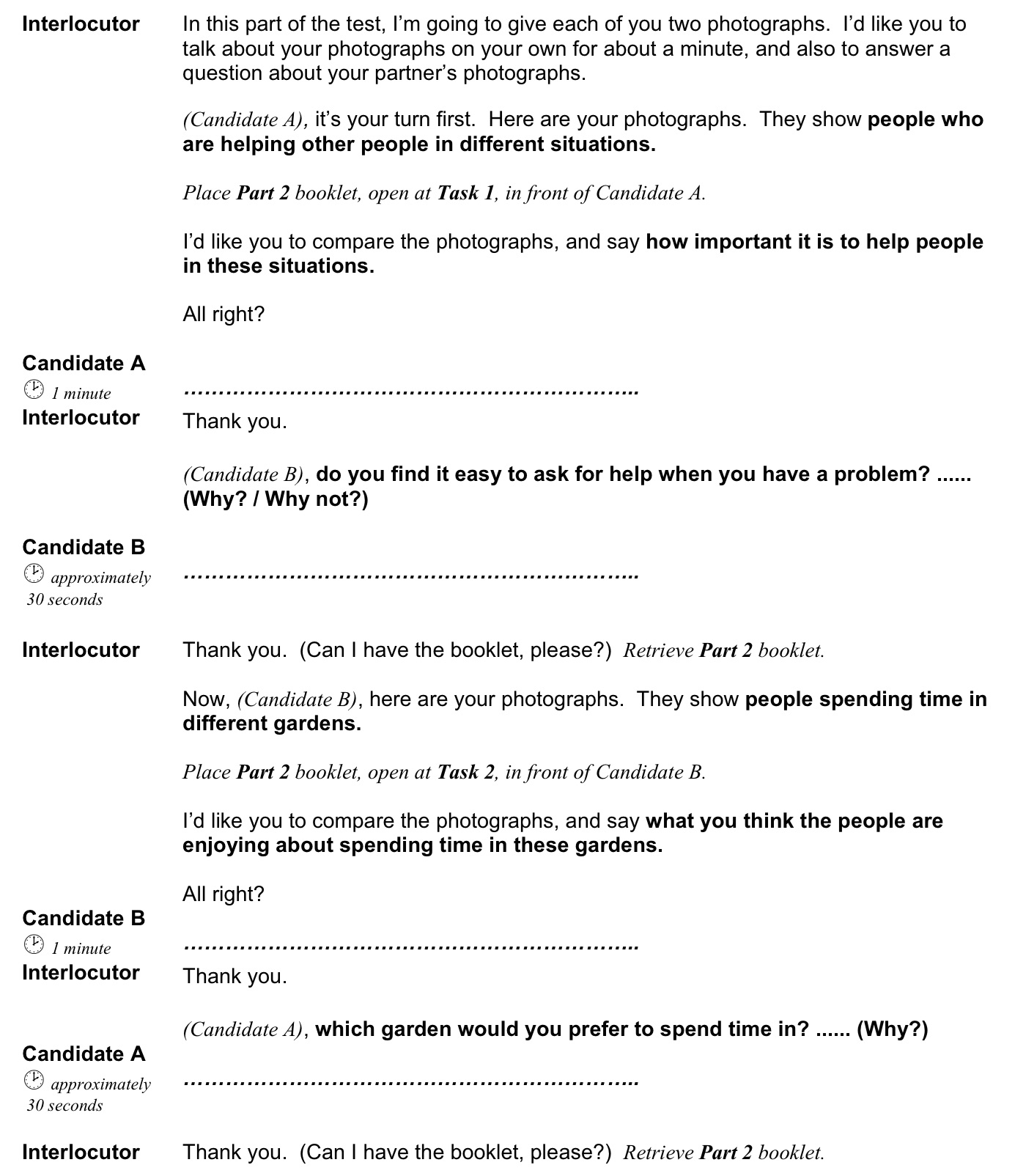
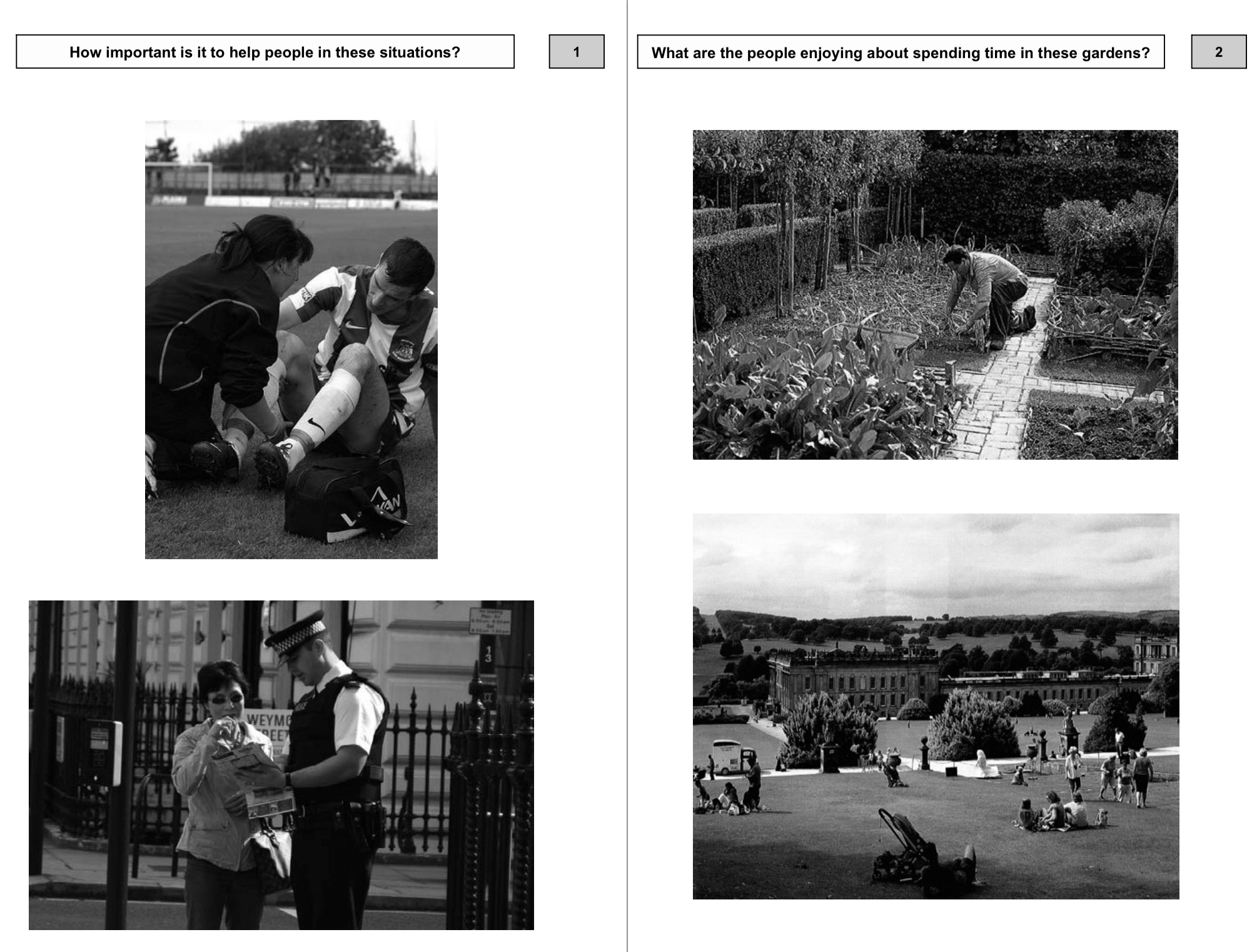
Cuando haces la comparación, en lo que más se van a fijar los examinadores es en cómo de bien, describes, expresas opiniones, especulas, etc.
Ejemplo: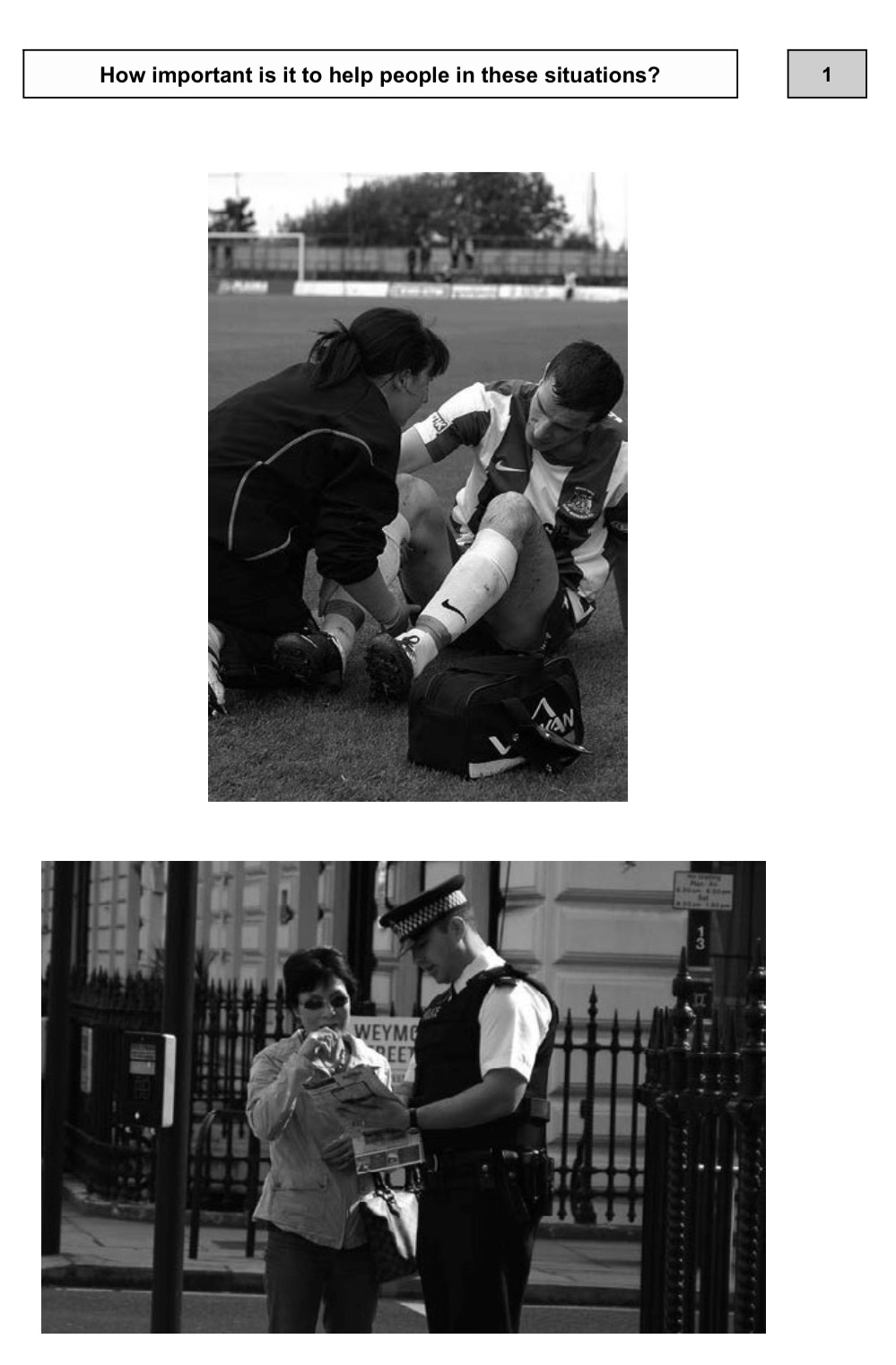
I'd like you to compare the photographs, and say how important it is to help people in these situations.
- Respuesta del Candidato A
Both pictures show people getting some help.
In the first picture, I can see a football player who seems to be injured, whereas in the second one there is an Asian tourist asking a policeman for help.
Although both situations involve someone helping a person, they are very different.In the first one, the football player needs assistance because he might be injured and, probably, he can’t walk properly.
On the other hand, in the second picture, the tourist is probably asking for directions because she might be lost.
Moreover, the footballer is likely to be in pain, while the tourist may just be a little nervous.
Answering the questions, I’d say help is important in both situations. However, I believe that the footballer needs more help than the tourist, as his situation is obviously more serious.
- Pregunta del examinador al Candidato B
(Candidate B), do you find it easy to ask for help when you have a problem?
- Respuesta del Candidato B
Well, it depends on the problem, but I normally do. Whenever I have a serious problem I ask my mum or my dad for advice. It’s not easy, but I do it. With other problems, I always ask my friends first, because they normally know what to do.
Después de esto, se repite el proceso de igual modo, pero empezando por el Candidato B y terminando con el Candidato A.
Part 3
En esta parte hay que interactuar con tu pareja de examen. En este caso, tienes que demostrar que eres capaz de mantener una conversación.
En concreto, en esta parte del Speaking de FCE, el examinador os describe una situación y os plantea una tarea en forma de pregunta y posibles temas que tratar con respecto a la pregunta. Básicamente, lo que tenéis que hacer es hablar sobre las diferentes opciones que os han planteado y trabajar para llegar a un acuerdo.
Al tratarse de una conversación, esta parte del examen de Speaking evalúa cómo intercambias ideas, expresas y justificas opiniones, expresas acuerdo y desacuerdo, sugieres, especulas, evalúas diferentes opciones, etc. El objetivo es llegar a un acuerdo.
La dinámica de esta parte es la siguiente:
- Instrucciones del examinador
- Debate (2 minutos)
- Instrucciones del examinador
- Debate para llegar a conclusión (1 minuto)
Tenéis 2 minutos para debatir las diferentes ideas antes de que el examinador os interrumpa y os pida que lleguéis a un acuerdo. A partir de ese momento, tenéis 1 minuto para concluir la conversación intentando llegar a un acuerdo.
Ejemplo:
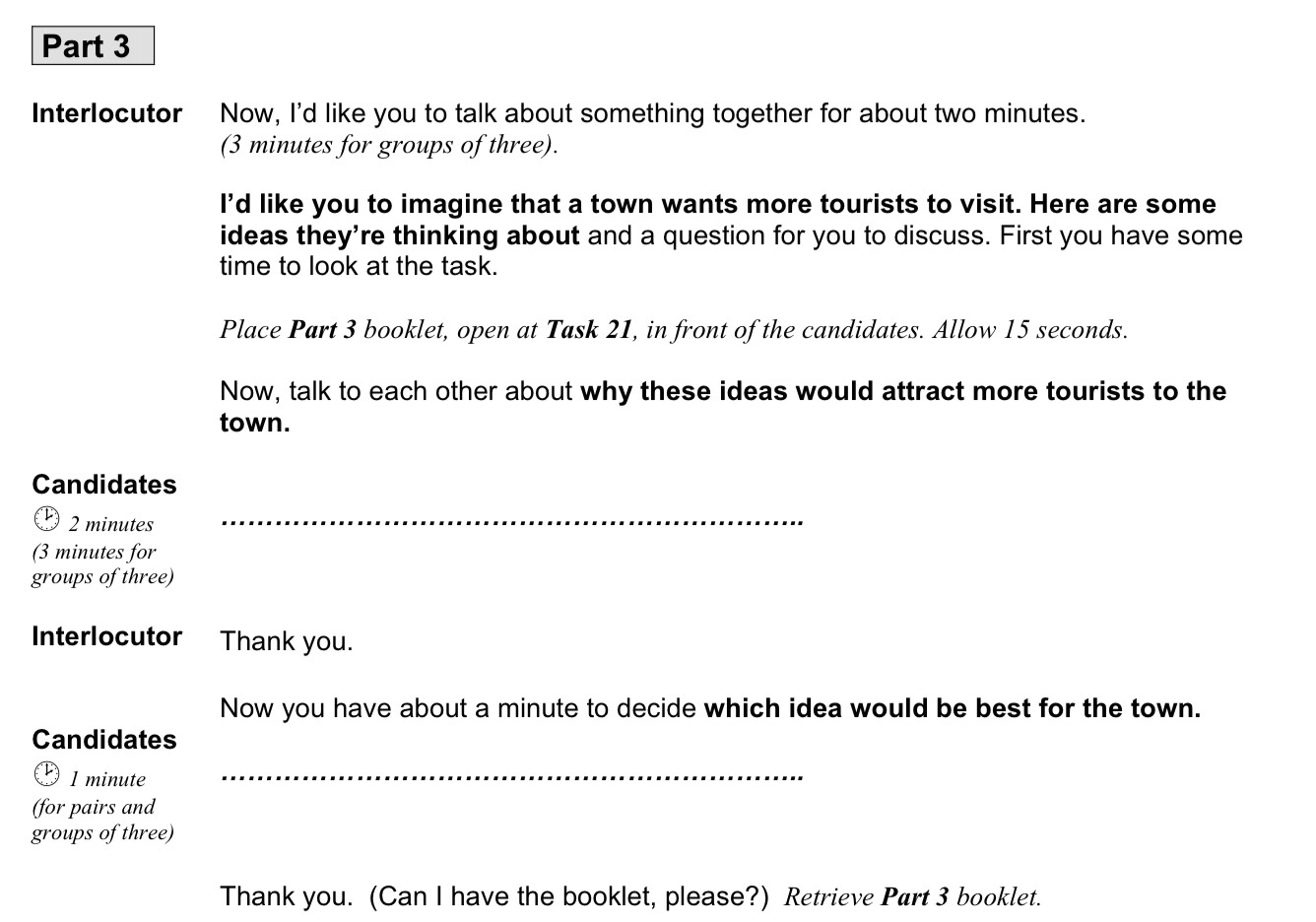
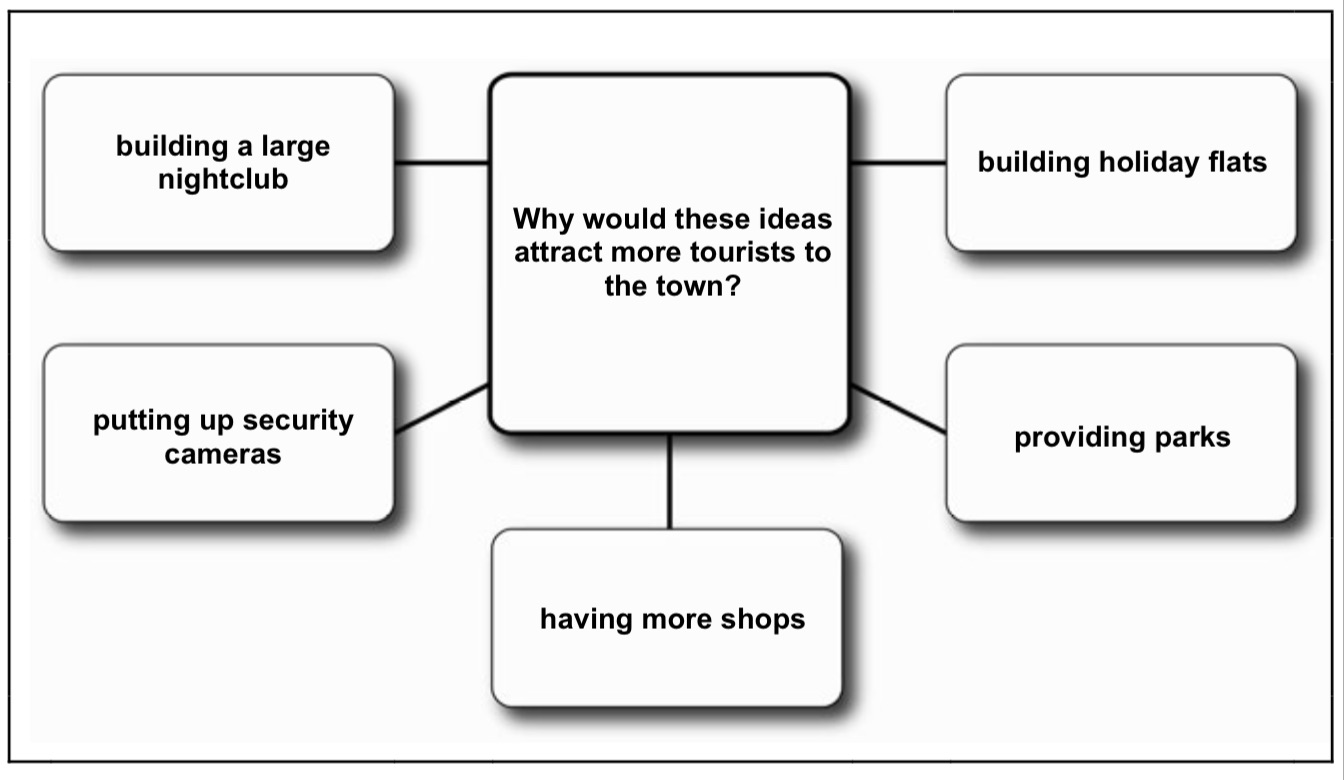
Expresiones útiles par la parte 3
? Exchanging Ideas
-
What do you think about this?
-
How do you see it?
-
From my point of view...
-
In my experience...
? Expressing and Justifying Opinions
-
I believe that... because...
-
I think that... since...
-
In my opinion...
-
I’d say that...
✅ Expressing Agreement
-
I agree with you.
-
That’s true.
-
You’re right about that.
-
I feel the same way.
❌ Expressing Disagreement
-
I don’t see it that way.
-
I’m not so sure about that.
-
I see your point, but...
-
I have a different opinion.
? Suggesting
-
What if we try...?
-
We could consider...
-
How about we...?
-
Maybe we should...
? Speculating
-
You might be right.
-
It’s possible that...
-
Maybe...
-
Perhaps...
⚖️ Evaluating Options
-
On the one hand... but on the other hand...
-
The advantage of this option is that...
-
This alternative seems more reasonable because...
-
If we compare both ideas...
? Reaching an Agreement
-
So, does that sound good to you?
-
To sum up, we could go with...
-
I think we both agree that...
-
If we combine our ideas, we can...
Part 4
Esta parte comienza con la temática planteada en la parte 3 del Speaking. El examinador te hará algunas preguntas que deberás contestar de manera clara y concisa.
Ejemplo:
